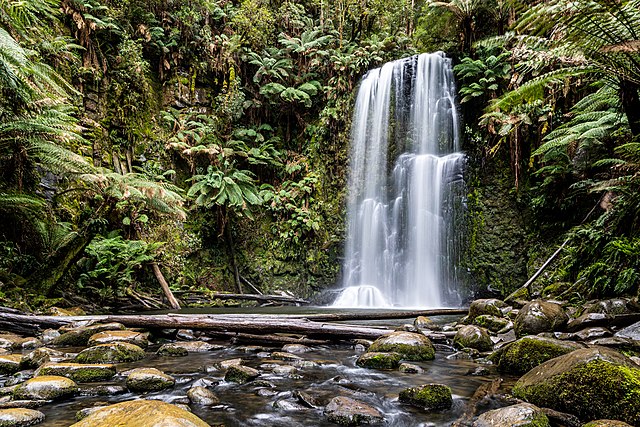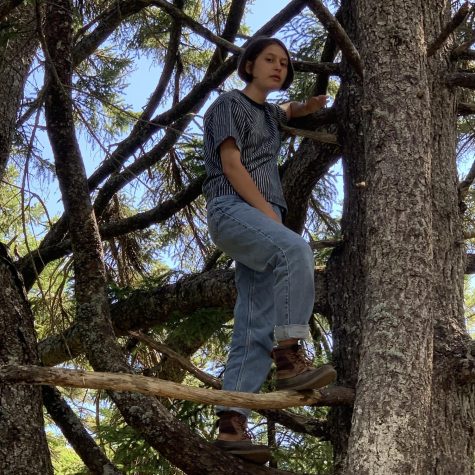How To Find Wildlife in Your Area
Dietmer Rabich, Wikimedia Commons
You won’t have to look far to find a furry face—although hidden, wildlife are everywhere to be found—if you know where to look.
June 23, 2022
While I was waiting for the bus one morning, two turkey vultures swooped low over my head in lazy circles, slowly climbing into the sky. Their mere presence surprised me; I wasn’t sure how two six-foot scavengers could survive in a land defined by manicured lawns and parking lots. I wasn’t sure how anything could survive here, really, except for squirrels and the odd raccoon. However, the closer I looked, the more wildlife I found—from rabbits to possums to migratory birds to turtles to owls—all hiding in trees and under bushes. It’s easy to overlook the wealth of animals that call our otherwise bland suburbia home, but once you start poking around, they become almost impossible to miss. A beautiful but elusive world surrounds us; all we need to do is find it.
After over two years indoors, we’ve become increasingly alienated from the outside world. Cooped up in our insular bubbles, it has become all too easy to get swept up in the stresses of school without much of a break, especially as Regents, Finals, and APs begin creeping up on our calendars. However, taking a moment to enjoy the outdoors can ground us and remind us that there is a greater world beyond school, one worth finding and observing. A study found in Harvard’s medical journal found that simply spending twenty to thirty minutes in nature greatly reduced stress. In addition to the tranquility nature provides, time outside helps you create much needed vitamin D, provides your lungs with fresh air, and improves brain functions. So, during one of the busiest but warmest periods of the school year, get outside and in touch with the wildlife around you!
Parks are one of the easiest places to begin your adventure into the natural world—especially large and semi-wooded ones. Although parks don’t seem like it at first, they offer a space of reprieve for various species of wildlife. Squirrels and house sparrows may seem like the only ones to call parks home, but many other animals can be found there if you’re patient and know where to look. Rabbits begin popping up on spring evenings, and bats follow shortly after, darting about in the summer night sky. You can even find foxes in more forested areas, such as Kings Point Park on the North side, or Alley Pond Park further south. Additionally, as birds begin to migrate back north, they flock to parks to rest, eat, and nest, filling trees with their bright breeding plumage and filling the air with their melodious songs. Learning to identify specific bird species by sight or ear can add a layer of playful competition between you and your friends, in addition to the joy that comes with seeing a new species. And even if you don’t see anything particularly interesting, parks themselves are great places to spend time outdoors, whether you’re playing a game with friends or simply sitting under a tree. Grace Avenue Park, Village Park of Lake Success, and Stepping Stone Park are all local and easily accessible parks that host a variety of wildlife and even waterfowl. Further but larger parks include Caumsett Park near Cold Spring Harbor, where you can see deer and even seals, Central Park in Manhattan, home to a Great Horned Owl, and Prospect Park in Brooklyn, whose shady and forested paths provide breeding grounds for many beautifully colored warblers.
Wildlife isn’t just confined to parks, however. Many animals—such as possums, groundhogs, and even flying squirrels—can venture into your very own backyard. Depending on where you live, you may even see white-tailed deer and other larger mammals. Consider setting up a bird feeder as well to attract pretty but hard to spot birds in every season; both suet and seed based foods will bring birds to your yard, and they are especially helpful as birds begin nesting. Nectar feeders, filled with an easily made concoction of sugar and water, might even draw in hummingbirds, who will soon become yearly visitors. While you’d have to be very lucky to see most nocturnal mammals that visit your yard, you can set up a trail camera or security camera to catch whatever night time visitors you may get in your yard. These animals, possums especially, are very beneficial—they play vital roles in our ecosystem and eat all types of varmints, including rats, insects, and snakes. Consider building a possum shelter somewhere on your property to support these and other key species. Working to improve ecosystems around you benefits all creatures involved, yourself included. Who knows, you may even catch a glimpse of one as they trot around your yard!
For many of us, spring is a time of tests and studying and more tests as the school year begins to wind to a close. But it is also a time of rejuvenation for the world around us, and a chance to experience the natural beauty we’ve come to ignore. Great Neck is a far cry from a national park or any other “wild” place, but underneath the veneer of cookie cutter houses and suburban sprawl there is a vast, wonderful world thriving alongside us. Learning to see the animals we share our parks, streets, and yards with may take time and awareness, but the joy and comfort it will bring more than makes up for. Maybe you’ll even see two turkey vultures circling over your head.







